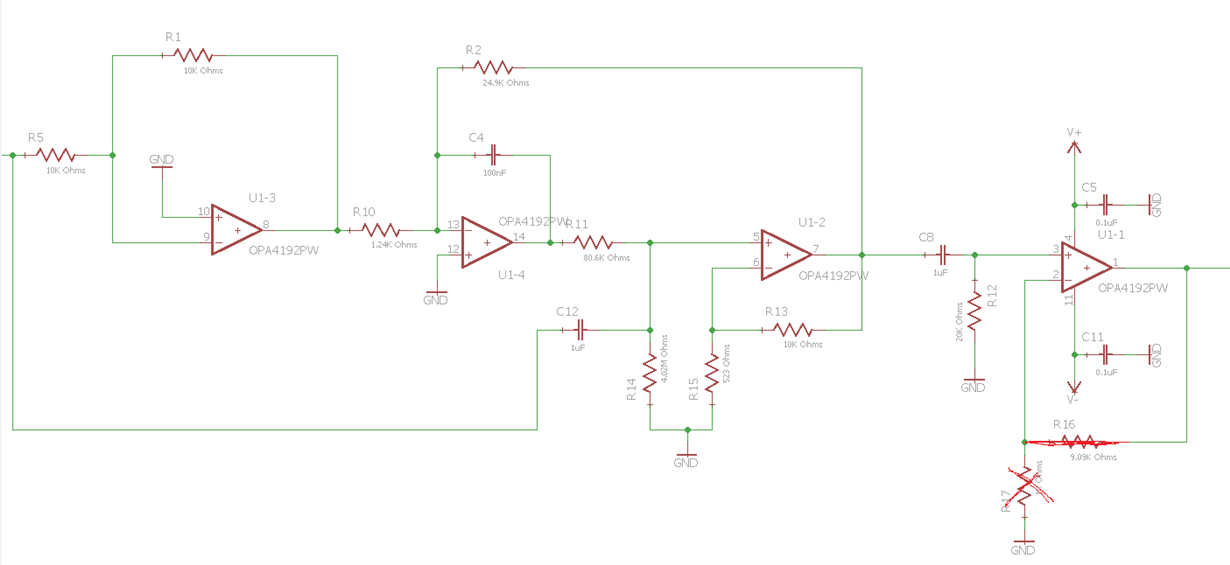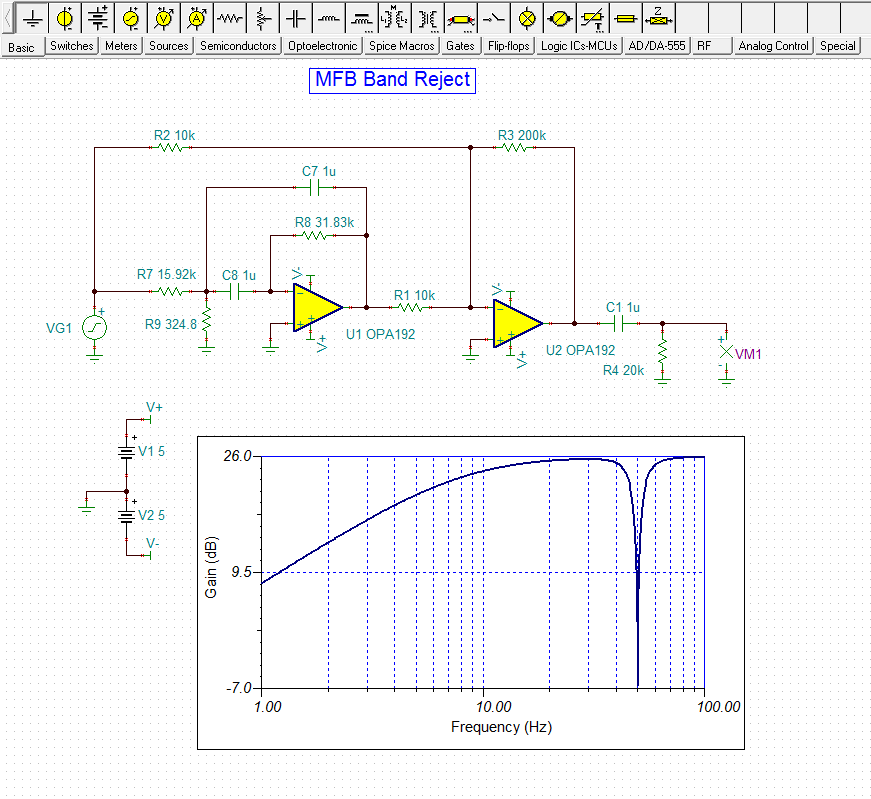Other Parts Discussed in Thread: TINA-TI
Hello!
I made notch filter with Bainter topology (using OPA4192) and obtain low Q.
Webench calculation gave ~40db, SPICE too, but I have only attenuation 4-5 times in stopband.
Frequency is low - 40-50-60 Hz, ground is.
Than I try change resistors - it gave frequency shift, up and down left and right passbands... all as in simulation...
Are anybody work with bainter filter? What is about real Q ?
Thanks!




